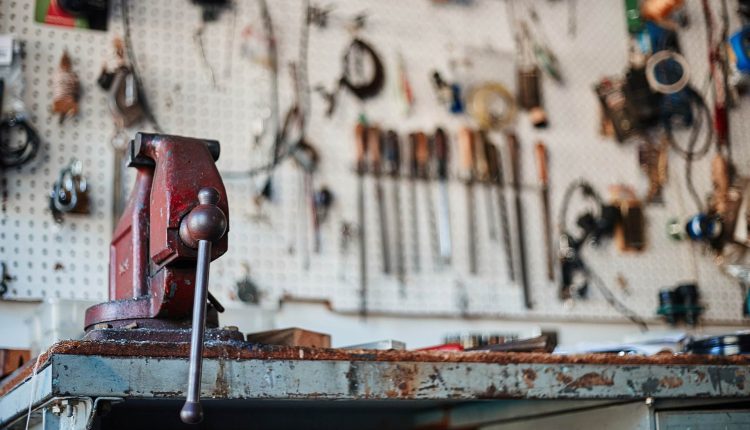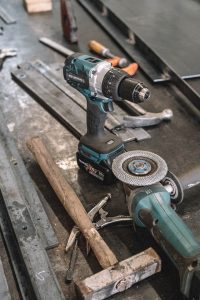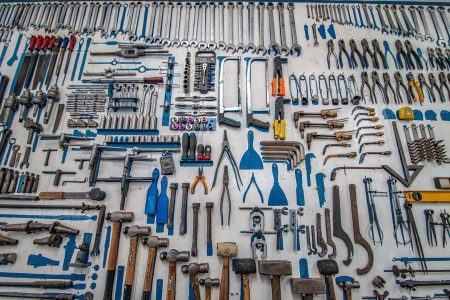“Argh, argh, argh…” – Tim Allen in his iconic role as Tim ‘The Tool Man’ Tayor
Today’s paid guest post article comes from Allen Michael, the founder and editor of Saws Hub, who shares some great information about ways to introduce your child to tools and teach tool safety.
Some of the best memories that I have as a kid are working with my dad on a project and using tools and seeing the work that we have done take shape in things like a bird house, fixing my bike together, or putting something together that requires tools. Introducing your children to tools doesn’t have to be scary or dangerous, but it should be done with their safety in mind. This is a great post to get your kids started while sharing your your experience with them to make life-long memories while putting in a little bit of elbow grease into something you can say you worked on with your kids. You built it/put it together with your kids. You’ll be surprised what kind of memories your children will latch onto. This could be one of them.
Thanks for the great article, Allen.
Enjoy.
– Will
Advertisement

Ways to introduce your child to tools and teach tool safety
Introducing your child to tools provides a great opportunity for them to learn how to work with their hands to build and assemble something. However, it is very important that you pick the right tools to start with, keeping their safety in mind. We share four tools that are good to introduce at different stages of a child’s development.
Power Tools

If you have a really young child, start with some of the tools recommended below that don’t require power. However, once your child outgrows these, here are some basic power tools to start with that are safe.
Impact Driver
Many think that that the best power tool to start their child off with is a drill, but an impact driver is actually far safer. Used for similar purposes such as driving screws into a variety of materials, an impact driver is a great first tool for your child.
Impact drivers are smaller that drills, which will allow it to fit better in a child’s hand. The quick connector is much easier to tighten than the screw chuck that is standard with a drill.
In the end, you can do virtually the same things with the driver. Opt for this tool as the perfect first tool for your eager young woodworker.
Jigsaw
Lets be clear – a jigsaw is not a tool that you want to leave your child alone with. But, with supervision, it is the best powered saw to start with. There are a couple of reasons for this.
First off, opt for a well reviewed jigsaw that isn’t likely to break on you. A cordless option can also be good, as there is less to get in the way while cutting.
The jigsaw is great because you can make slow cuts with your hands away from the blade. Blades are easy to change, and you can opt for a blade that doesn’t have dangerous teeth.
Kids love jigsaws too, as they allow them to make intricate, curvy cuts that are fun and interesting.
Block Plane
These hand planers are fantastic for kids. While they require supervision, they are not very dangerous to use. And, this tool allows a child to put finishing touches on all of their wood projects.
This is one of the best tools for a child to see instant gratification for their work. Within minutes, they can take a piece of wood from rough to smooth, all the while seeing the wood shavings as they come off.
Wrench and Ratchet Set
Ratchet and wrench sites come in all shapes and sizes, and are fantastic sets for children to tinker around with. There are a variety of different projects that a kid can work on with these sets, ranging from cars to bikes to anything else you pick up at the local thrift store.
Combine this set with some of the other tools mentioned, and your child would be able to assemble a wide array of fun projects.
Safety Considerations
At the end of the day, the parent is always the one responsible for a child’s safety while using tools. Manufacturers don’t publish recommended ages for any of their tools, and so it falls on the parent to be the final judge.
Teaching children a healthy respect of what each tool is capable of is important. Reviewing the dangers that each tool posses is also important. Once a child is able to understand what each tool is capable of, they can begin to understand how to stay safe while using it.
As always, enjoy the process of introducing your child to the various tools involved in woodworking. Your child will learn some valuable lessons, all while working and building with their hands.
